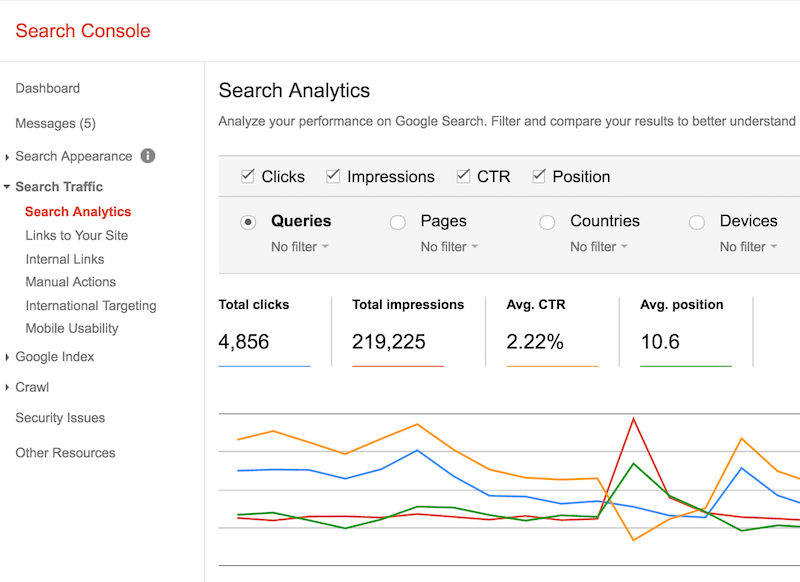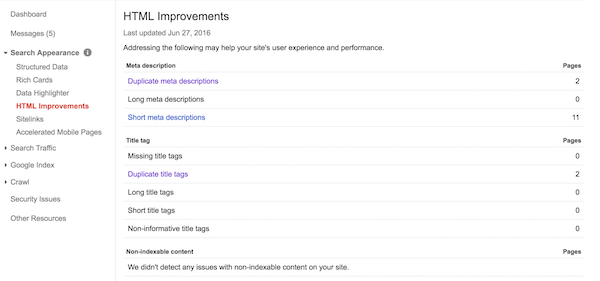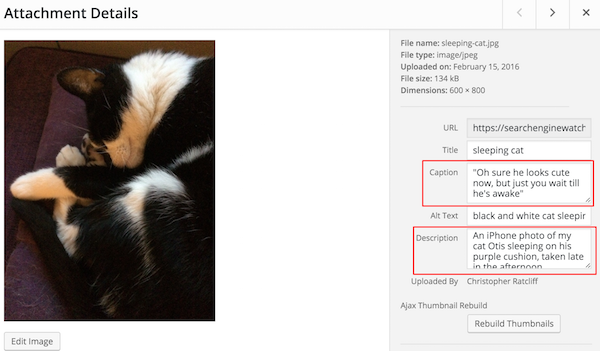I know. It’s the 21st century equivalent of ‘8 minute abs’. But bear with me on this…
Search engine optimisation should be an ongoing process, mixing technical on-page techniques with quality content, good old fashioned marketing, plenty of research, tonnes of planning, masses of testing and all the while taking into account searcher intent, context, algorithm changes… I get breathless just thinking about all the work that needs doing…
Basically, SEO is a job that is never done.
But, if you are struggling with time and resources, there are SEO techniques that don’t have to consume your entire day.
The following can be done while sat down in the morning, enjoying a pastry, listening to some cool light-jazz and blissfully remembering that this is a much better use of your time than that other ‘resolution’ you toyed with doing four paragraphs ago.
1. Check your site’s organic CTR, revise 10 of the lowest performing page’s title tags and meta descriptions
Head into your site’s Google Search Console, then click on Search Traffic>Search Analytics.

Then click on the Impressions and CTR filters for Pages.
Here you can take a look at the pages with high visibility, but low CTR. Perhaps all they need is an improved meta description or title tag?
For a more detailed overview, check out How to improve CTR using Search Console.
2. Add Schema markup to your 10 most popular pages
You can add rich media to your search results by adding Schema markup to the HTML of your pages.

If you have a particularly massive site with years and years worth of posts, the idea of adding rich snippets to your pages can seem terrifying. Instead, make a spreadsheet of your most popular posts, then every day go through 10 of them and implement schema markup. (Read more...) should help gradually improve the CTR of your results.
3. Improve your site speed by optimising images
Site speed is a hugely important ranking signal, and you can check your site’s loading time on both mobile and desktop with this new site speed tool.
Obviously improving the performance of your site is a complicated job best saved for the tech team, but you can help…
Images are are by far the ‘heaviest’ element when it comes to page load. So why not spend a few minutes working back through your most popular posts and making your image file sizes smaller.
For example, if there’s an image on your page that’s 1024 x 683 pixels, but the user only sees it at a maximum of 420 x 289, you could ease the strain on your page by compressing the file size with very little noticeable difference.
Read this article for full details: How to optimise your page images to increase site speed.
4. Check the proper canonicalization of your domain
Are you aware that your site may exist in two different places? Without even knowing it, Google could be indexing your content from both www.example.com and example.com and therefore you may be cannibalising your own pages in search.
Luckily it doesn’t take very long to fix this problem.
You just have to tell Google which is the preferred version of your domain for all future crawls of your site and indexing refreshes.
As it states on their webmaster help page:
If you specify your preferred domain as http://www.example.com and we find a link to your site that is formatted as http://example.com, we follow that link as http://www.example.com instead. In addition, we’ll take your preference into account when displaying the URLs.
To change this, visit Search Console, click on your site, click the gear icon then click Site Settings. And in the Preferred domain section, select the option you want.
5. Verify your Google My Business page, make sure your details are up to date
Kevin Gibbons wrote some good suggestions for us when it comes to optimising your page for local search:
- Claim your listing, as often many people don’t.
- Ensure your details are up-to-date (previously you might not have accepted credit cards).
- Double check your opening hours and phone number as these often change over time or the business has new owners or management
- Check the business images you are using and consider refreshing them or uploading higher res versions.
- Check no-one has made an edit to your listing and changed the businesses’s website to their affiliate link, have seen this too!
There are loads more tips here: How to optimise your Google My Business listing.
6. Check that you don’t have any duplicate meta description and title tags
This is a very easy one. Just head back into Search Console, click on Search Appearance>HTML Improvements, then you can see exactly which of your pages contain duplicate metadata and you can alter accordingly.

7. Keep on top of your image alt attributes
Google Image Search can drive a significant amount of traffic to your site, however you must remember that Google can’t ‘see’ your images, but it can ‘read them’.
Therefore describing your images accurately and concisely in the ‘alt text (or alt tags) section is very important.
Check back through your last handful of pages and make sure your images conform.

You could even look at the alt tags at the same time as checking your image file sizes (see point 3).
For lots more information, check out How to optimise images for SEO.
8. Check your 404 error codes
404 pages occur when a Googlebot attempts to visit a page that doesn’t exist. Generally 404 pages are fine and won’t harm your rankings, but it is important to pay attention to them, especially if there’s a sudden increase.
You can check these in Search Console, under Crawl>Crawl Errors.
Then if anything looks to have been deleted accidentally, or a 301 redirect hasn’t been put in place properly, you can fix these straight away.
9. Keep on top of your internal linking
Regular and consistent internal linking to the most popular articles on your site is a key way to show search engines that your site has authority and that your content is ‘trusted’.
There are many different methods and tools to check which of your pages is the most popular for any search phrase, and therefore the ones you should be using to internally link for added SEO benefit.
Spend some time going back through your posts and ensuring that each post has a few internal links, paying particular attention to the anchor text used, and making sure they’re all relevant AND pointing towards pages you wish to see rank.
There’s an excellent, detailed best practice guide here: Internal linking for SEO.
So there you go. Nine quick things you can do to improve your SEO every day without taking up too much of your energy. Obviously this is far from an exhaustive list, but it’s definitely a start to getting the basics right.
Related reading
Attracting clicks on your ads is just the first part. A great landing page is essential to any PPC strategy. You then need ... read more
Viral content is sort of the holy grail of internet marketing; everyone wants it, but almost no-one knows how to get it. ... read more
Sites which scrape and copy content from others are sometimes able to outrank the original source and damage their search rankings. What can be done about it?
What is a title tag and how do you write one? Why are they important? Do they actually help with SEO? Can I see ... read more




